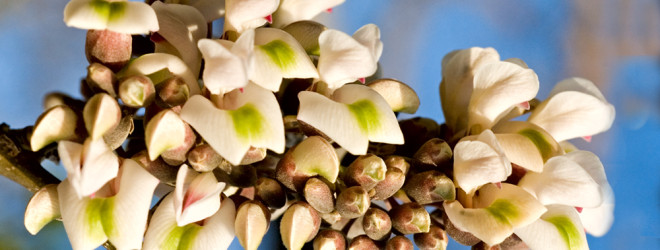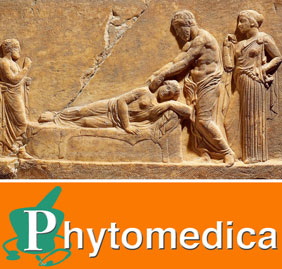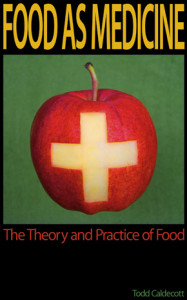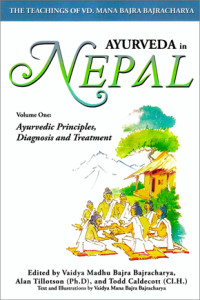I have really bad cramping during my menstrual cycle, what can I take? Also, is this affecting the fact that I’m trying to get pregnant?
Excessive cramping during menses (dysmenorrhea) can be related to many factors, and without seeing you it is difficult to say which are at play. However, there are a few basic categories of issues that I see in my patients with dysmenorrhea.
Inflammation
The first issue relates to an imbalance in eicosanoid production, locally acting hormones such as prostaglandins, thromboxanes and leukotrienes that mediate the pain and inflammation of dysmenorrhea. Cleaved from the fatty acids in the membranes of our cells, this imbalance in eicosanoid production is mostlycaused by consuming too many omega 6 fatty acids relative to omega 3s. In an attempt to maintain the yin-yang balance of homeostasis, the body utilizes omega 6 fatty acids to create pro-inflammatory eicosanoids, whereas omega 3 fatty acids are metabolized to produce anti-inflammatory eicosanoids. Modern women have a greater tendency to experience pain and cramping during menses simply because the modern diet contains an excess of omega 6 fatty acids, relative to omega 3 fatty acids, resulting in a net-increase in inflammation. This issue arose during the 1900s when big food companies began to market hexane-extract and refined oils derived from mono-cultured crops corn and sunflower as “healthier” alternative to traditional fats such as butter and lard. While you can take supplements such as fish oil to restore this balance, the correct solution is to avoid excess sources of omega 6 fats in your diet, including seed oils and feedlot meat, and emphasize sources of omega 3 fats such as wild fish, grass-fed meat, and green vegetables. In this way, eicosanoid production will begin to normalize, without consuming significant volumes of unstable oils such as flax, hemp or fish oil.
Nervous stress
Another common issue with dysmenorrhea relates to the state of the nervous system. The pain and cramping of dysmenorrhea relates to vāta doṣa in Āyurveda, as vāta relates not only to the function and activity of the nervous system, but to the specific region of pain, i.e. the pelvis and lower back, as this area is the primary seat of vāta. In dysmenorrhea, the issue is the blocked or impaired flow of vāta, which requires measures to both balance its function, as well as to restore its proper movement. General measures used to calm and balance vāta include herbs such as verbena, skullcap, and ashwagandha etc., as well as nutrients such as magnesium and B vitamins that support the nervous system during periods of stress. Often I recommend activities such as dancing, and in particular belly dancing, as this is an excellent way to both relieve nervous tension and promote pelvic circulation in women. Likewise, sexual activity and orgasm can be helpful for reducing dysmenorrhea, and coordinating the muscular contractions of the uterus. More specific herbal measures to balance uterine contraction include the use of uterine tonics such as false unicorn root, blue cohosh, dang gui and raspberry leaf. For unbearable cramping, I frequently recommend antispasmodic and analgesic herbs such as black cohosh, cramp bark, California poppy, pulsatilla, and Jamaican dogwood (pictured at top).
Pelvic stagnation
The other major factor in dysmenorrhea is the state of pelvic circulation. In Āyurveda, it is the blocked flow of vāta that leads to the painful cramping, but just taking measures to reduce vāta doesn’t address the cause of pelvic stagnation. Rather, attention must be focused on the liver, which is responsible for draining the pelvic cavity of blood via the hepatic portal vein. Liver congestion thus promotes a backlog, and the result is the pelvic stagnation underlying the aggravation of the nervous system. Traditional measures to “move the liver” are thus indicated, including bitter-tasting herbs such as dandelion root, barberry root, and bupleurum root, that all stimulate bile synthesis and release.
Weak blood
The other side of pelvic stagnation is that the blood can be deficient, and the pain that arises is akin to squeezing a dry sponge. The uterus squeezes, but nothing comes out, so it squeezes harder and harder to elicit menses. This type of dysmenorrhea is particularly notable with symptoms of anemia, including pallor, coldness, vertigo and fatigue. In such cases, instead of just stimulating the liver, measures to nourish and support the blood are indicated, using herbs such as American ginseng, shatavari, dang gui, peony, rehmannia, goji berry and jujube date.
Relative progesterone deficiency
Lastly, it’s good to look at some of the underlying hormonal causes of dysmenorrhea, particularly when dysmenorrhea is associated with uterine fibroids and endometriosis. The growth of the endometrium and fibroids is dependent upon the hormone estrogen, and hence women that suffer from fibroids and endometriosis express a relative estrogen excess. Measures such as supporting liver function, consuming lots of dietary fibre, and eating live-culture foods, can all be very helpful to bind up and excrete excess estrogen. Likewise, a relative estrogen excess is usually associated with a deficiency of progesterone, and is a frequent issue with women struggling with fertility issues. Some typical herbs used that act upon the hypothalamic-pituitary axis to boost progesterone synthesis include peony root and chaste berry.
A possible formula for dysmenorrhea might be:
- 4 parts peony root
- 4 parts chasteberry
- 2 parts black cohosh
- 2 parts blue cohosh
- 2 parts crampbark
- 2 parts rehmannia
- 2 parts barberry
- 1 part ginger root
- 1 part licorice root
Decoction (1:20): 1 cup 2-3 times daily
Tincture (1:3): 5 mL (1 tsp), 3-4 times daily before meals; day 14 of cycle until menses
For more information on women’s health issues, please review my article on premenstrual syndrome and endometriosis.






